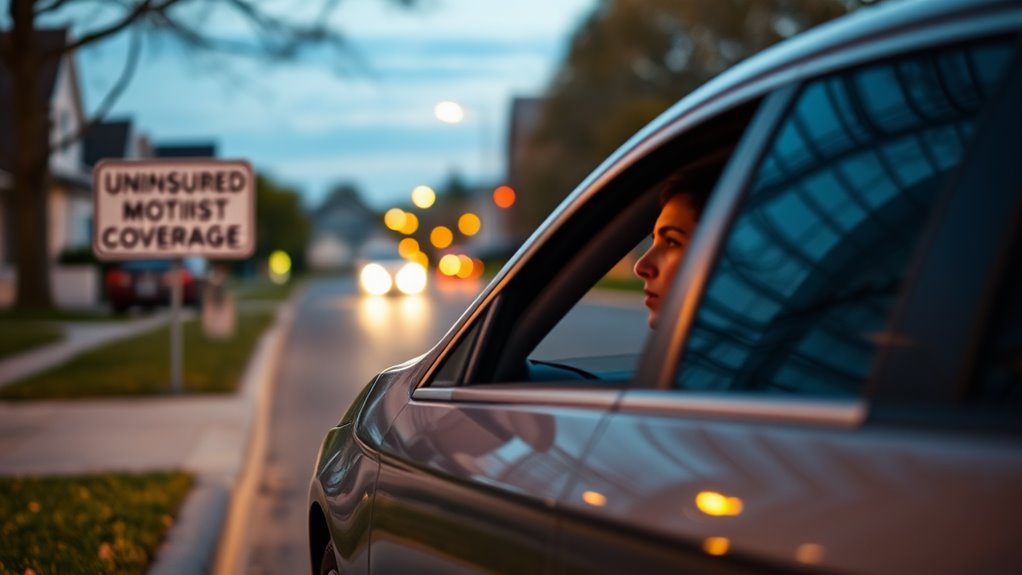What Is Insurance for New Drivers?
Getting behind the wheel for the first time can feel like stepping onto a tightrope without a safety net. For new drivers, insurance acts as that vital safety net, shielding you from financial fallout after an accident. However, understanding the specifics—like liability, collision, and all-encompassing coverage—can seem overwhelming. What's the best way to protect yourself while keeping costs manageable? Let's explore your options and how to make insurance work for you.
If you're a new driver, understanding insurance is vital for protecting yourself on the road. As someone without a driving history, you'll likely be classified as a "high-risk" driver, which means your insurance will cost more. Insurers view new and young drivers as higher risk due to their lack of experience and driving records. This increased risk translates into higher premiums, making it important for you to grasp the factors that influence your insurance rates.
Age plays a notable role in determining your insurance costs. Younger drivers, particularly those in their late teens and early twenties, typically pay more for coverage. This is largely because insurers believe younger individuals are more likely to be involved in accidents. Your driving experience is another vital factor; without a proven track record, you're deemed inexperienced, which drives up your premiums. Additionally, affordable car insurance options can be found for new drivers who take proactive steps to improve their risk profile.
Younger drivers often face higher insurance costs due to perceived risks associated with their lack of experience.
Additionally, the type of vehicle you drive can affect your rates. If you own a luxury car or a vehicle that's expensive to repair, expect to pay higher premiums. Geographic location also influences your insurance costs. If you live in an urban area, you might face higher rates due to the increased likelihood of accidents and theft. Conversely, rural areas may offer lower premiums.
Your driving record will further impact your insurance costs. Maintaining a clean record without accidents or traffic violations can help lower your premiums over time. New or inexperienced drivers face higher premiums initially, making it crucial to develop safe driving habits from the start. When selecting insurance, you need to be aware of the types of coverage available. Liability coverage is mandatory in most states and covers damages you may cause to others in an accident.
Personal Injury Protection (PIP) is another important option, as it covers your medical expenses regardless of fault. Uninsured/underinsured motorist coverage protects you against drivers without enough insurance. Collision and extensive coverage can also be beneficial; collision pays for damages to your vehicle, while comprehensive covers non-accident-related damages.
It's essential to understand your state's insurance requirements, as these can vary. While most states require liability coverage, some mandate additional coverage like uninsured motorist protection or PIP in no-fault states. Keep in mind that state minimums may not fully cover you in the event of an accident, so consider opting for higher limits.
Budgeting is key when choosing the right coverage. Assess the value of your vehicle to determine if comprehensive and collision coverage is necessary. Your driving habits will also influence how much coverage you need; for example, if you frequently drive in high-traffic areas, you might want more protection.
To save on insurance, consider completing a driver's education course, as this can lead to discounts. Shopping around for quotes from different providers is also advisable, as rates can vary greatly. Bundling your insurance policies or increasing your deductible can further help lower premiums. Finally, maintaining a good credit score can positively impact your insurance rates.
As a new driver, taking these factors into account will help you make informed decisions about your insurance coverage.
Conclusion
In the journey of becoming a skilled driver, having the right insurance is like a safety net beneath a tightrope walker. It cushions you against unexpected falls, ensuring peace of mind as you navigate the roads. By understanding your coverage options and practicing safe driving, you can gradually lower those intimidating premiums. So, buckle up, drive carefully, and watch your insurance costs shrink while your confidence soars. Your road ahead is brighter with the right protection in place.


